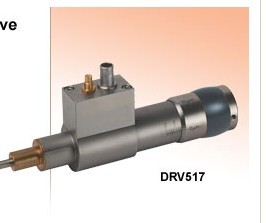|
|||||||||||
产品分类 |
||
|
|
||
其它/DRV517/压电驱动器和传动器
- 其它/DRV517/压电驱动器和传动器
- 欲购买或租赁其它/DRV517/压电驱动器和传动器?请在线咨询或拔打24小时电话:13715327187
 |
详细资料:
|
Knowing the rate at which a piezo is capable of changing lengths is essential in many high-speed applications. The bandwidth of a piezo controller and stack can be calculated relatively simply if the following is known: (1) The maximum amount of current the controllers can produce. This is 0.5 A for our BPC Series. The physics behind it is quite simple: when we drive the output capacitor, we need some current to charge it and discharge it. The larger the capacitance, the more current we need. The maximum rate of voltage change (called slew-rate) is:
So for example, for a 100 µm stack, having a capacitance of 20 µF:
When you demand an instantaneous voltage change from, say 0 V to 75 V, it will take 3 msec for the output voltage to reach 75 V. The bandwidth of the system usually refers to the system''s response to a sinusoidal signal of a given amplitude. For a sinusoidal signal of peak amplitude Vpk, and frequency f, the maximum slew-rate is:
The maximum full-range (75 V) bandwidth of the above example would be:
For a 10 µm stack, the results would be 10 times better, or about 530 Hz. Or, if you only wanted a 7.5 V peak to peak signal (10% max amplitude) with the 100 µm stack, again, the result would be about 530 Hz. Please note that these calculations only apply for open-loop systems. In closed loop mode, the slow response of the feedback loop puts another limit on the bandwidth. |
仪器保证:
我们的大多数设备在装运之前均经过严格的质量检测与校验。也可申请国家计量证书。
品牌推荐 |
||
|
|
||
|
Copyright© 2022 All Rights Reserved. 深圳市嘉惠捷科技有限公司 版权所有 [粤ICP备11090750号] [法律顾问] 公司地址:深圳市南山区西丽牛成路221号8楼 邮编:518000 在线QQ服务: 回收热线:13982098642 E-mail:sales@test-e.com |








